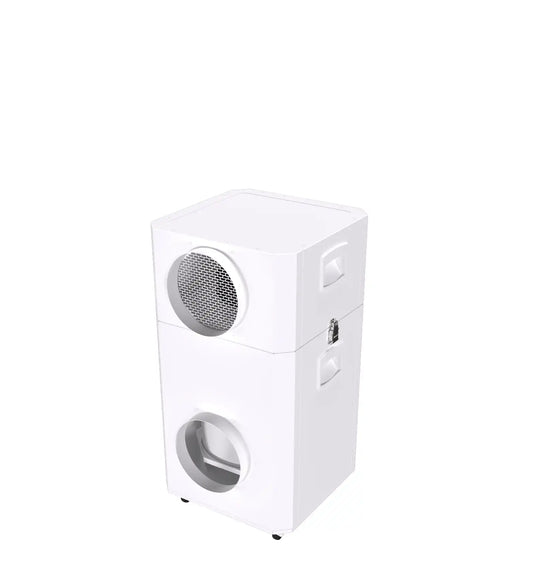How Do Air Purifiers Work?

How do air purifiers work? Simple, an air purifier captures the particles that you don’t want in the air so you can breathe safe and easy. Now let’s dive into the technicalities of air purification.
Particle Size
Air is made up of a melting pot of particulates that greatly vary in size include things such as pollen, mould spores, dust, bacteria, pet dander, soot, and viruses. The sizes of all these particles range from about 100 microns on the large side, down as small as 0.003 microns. That’s equatable to the thickness of a human hair, down all the way to the size of DNA!
Now if you took a sample of air and counted the particles and their sizes, more than 90% of particles are in the size range of 0.1 to 0.003 microns.
Filter Material and Air Flow
Air filters can be made of a multitude of materials that capture coarse, fine, and ultrafine particles. Some of these fibrous materials include fibreglass, natural or synthetic hair, polyester, or polyurethane. Each filter material has different advantages like lifespan, capture rate, and airflow resistance.
Particle Capture
There are four methods of collection that trap particles to the filter material.
First, there is interception. This is when a particle is following a stream of air and makes contact with a filter fibre, becoming adhered to the filter material.
Secondly is inertial impaction. This occurs when a particle is unable to follow the curve of an airstream around a fibre, impacting the face of the fibre and becoming adhered to it.
Next is diffusion. Particles on the smaller side of the size spectrum are colliding with gas molecules, causing the particle to follow a path behaviour similar to Brownian motion, which looks like an erratic squiggly line when mapped out. The path of motion of these particles greatly increases the probability that the particle will adhere to the filter fibre.
Lastly is electrostatic attraction. Particles generally have a negative charge from floating in the air. The negative charge is attracted to a positively charged filter fibre and once contact is made the particle is stuck to the fibre.
VOC and Carbon
It’s important to understand that HEPA filters arrest very fine particles but do not filter out gases and odour molecules. This is where activated carbon goes to work, filtering out volatile organic compounds (VOC). Activated carbon works by having an incredibly large surface area and contact time for the gas molecules to become trapped inside the pore structure of the carbon. Carbon is capable of capturing VOC's, chemical vapours, cigarette smoke, pet odours, and many other flatulent or harmful gases.
What To Look For
High-efficiency particulate air (HEPA) is a classification of air filtration efficiency. To classify as HEPA by US government standards, from the air that passes through it, an air filter must remove at least 99.95% of particles that have a size of 0.3 microns. Why only 0.3 microns? Is that the smallest size particle? As we saw before it is not. It’s not even in the 90% concentration size category of particles in the air. So what is special about 0.3 microns?
Well, filters have a weak point between 0.4 and 0.1 microns where their performance is lowest based on the collection mechanisms. This had led to one particle size of 0.21 microns that is the most difficult to capture and is known as the most penetrating particle size (MPPS). This has been repeatedly tested and scientifically proven. Because of this weak point, HEPA specifications use the retention of particles near the size of 0.3 microns to classify filters.














